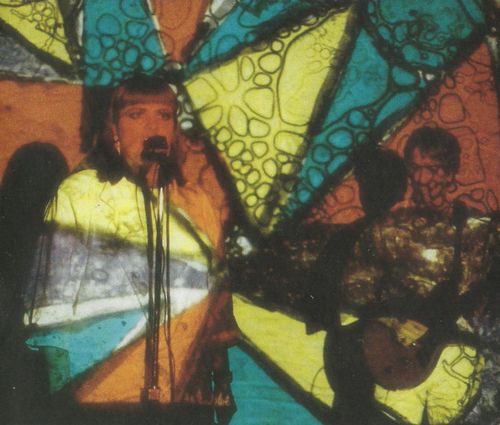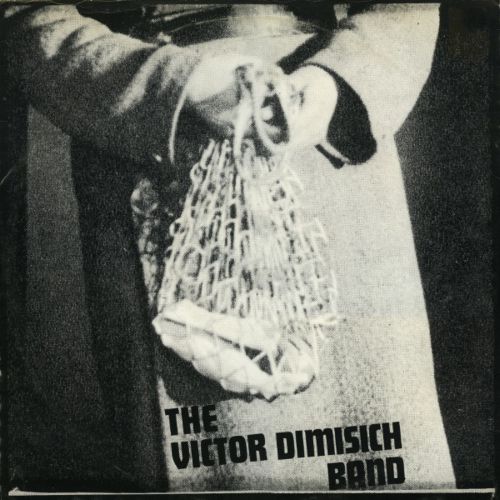Seattle's Cat Butt was known for its supergroup lineup. Its original members consisted of two parts U-Men, one part 64 Spiders, and one part Girl Trouble. They were all bands that had created a stir in the Northwest punk scene during the mid- to late '80s. With two separate lineups, Cat Butt lasted a total of two years, churning out garage rock with a hardcore attitude. During the course of their lifetime, they managed to perform shows with such groups as Rapeman, Nirvana, Killdozer, Mudhoney, Naked Raygun, Green River, and many others. They left a trail of debris stemming from their fall 1989 tour, on which their bassist vomited at GWAR's home in Richmond, VA; their singer fell in love with Superchunk bassist Laura Ballance in Chapel Hill, NC; and they discovered The Reverend Horton Heat. Ultimately, one of the incidents from the tour, which involved a van supplied by Sub Pop records, led to their release from the label.
Originally from Houston, TX, vocalist David E. Duet was in a very early version of Cat Butt before he moved back to the Lone Star state. While he was living as a homeless punk in Austin, he met rhythm guitarist Michael Hutchins (aka John Michael America). Hutchins was a well-seasoned musician having played with a multitude of bands in Houston, such as The Burning Hearts. Duet decided to return to Seattle in 1984, where he met The U-Men's guitarist Tom Price (aka Manny El Dorado) and drummer Charlie Ryan (aka Circus). It was also upon Duet's return to Seattle that he met lead guitarist James Burdyshaw (aka Brother James) at a house party. Burdyshaw had previously been involved with mod / punk band The 64 Mob, which eventually became 64 Spiders in 1983. After realizing that they both shared common ground in their musical preferences, the two became good friends. Duet joined the group Girl Trouble in 1985 after that band's vocalist, K.P. Kendall, left. After Girl Trouble released Duet because of his live-for-the-moment lifestyle, he became the roadie for his friends in The U-Men. Following Duet's return from a tour with The U-Men in January of 1987, he told Burdyshaw of his desire to start a band modeled on the concept of Tim Kerr's Poison 13. Burdyshaw was still playing in 64 Spiders and tried persuading Duet into singing vocals for them, but it didn't work. The two worked out an agreement to start a completely new band, however, focusing on Duet's love of sleazy garage punk. As luck would have it, The U-Men had just released bassist Jim Tillman. Duet talked Price into playing bass for his new group and Ryan into playing drums. Hutchins had just moved to Seattle from Houston at that time, so Duet invited him to play rhythm guitar. The lineup was complete, but now they had to decide on a name. According to Burdyshaw, Duet came up with the moniker Cat Butt because he and his girlfriend were either stoned and became enamored by their feline's behind, or Duet thought his girlfriend's dreadlocks looked like a cat's rear end. Duet also joked that the name evolved from the secret recipe in his Grandma's meat pies. Once the name was assigned, Hutchins and Duet began writing material. Before this lineup of the group dissolved at the end of the summer of 1987, they recorded five songs. The band entered Reciprocal Recording with producer Jack Endino, who would record all of the group's output until their demise.
Eight months after their inception, Price and Ryan left to focus their attention on The U-Men once again and working with that band's new bassist, Tony Ransom. Burdyshaw recommended bringing in a couple of friends he'd met through various female interests. Bassist Dean Gunderson (aka Fly Daddy Gundo) had spent time with a band called The Butt Pirates, while drummer Erik Peterson (aka E-Roc) had been a member of Yard Sale. Penultimate Records co-owner Volker Stewart caught wind of Cat Butt at the end of the year and worked out a verbal agreement to release a single. '64 Funny Cars / Hell's Half Acre' was released in March of 1988 and wound up being the sole 7" of Cat Butt's career. Hutchins was told to leave shortly after the release due to his ongoing drug problems. He was replaced for a short period of time by a friend of Peterson's, who ultimately grew tired of the band's party lifestyle. Duet's friend and former Phoenix, AZ-native Danny Bland joined as a full-time member in August of 1988. When Duet was on the road with The U-Men, Bland's band -the Nova Boys- were on the same bill one night, which is how the two of them became friends. Bland was also enlisted as the manager for Cat Butt, following his 1988 move to Seattle, and earned a reputation as a respected booking agent for Sub Pop, as well as other independent bands. At this same time, Stewart worked out another verbal agreement with the band to release their first full-length LP on Penultimate, however, Volker never lived up to his word. It was a well-known fact that Sub Pop records' co-owner Bruce Pavitt was a big fan of Cat Butt, and he loved the songs the lineup had recorded with The U-Men's Price and Ryan. Pavitt asked Duet about the recordings with Price and Ryan, and Duet gave Pavitt a track called "Big Cigar" for inclusion on the 'Sub Pop 200' compilation, which was released in November of 1988.
It was also at this time when Cat Butt's relationship with Penultimate Records was severed. Pavitt, who believed the band could be the next Pussy Galore, offered better exposure and distribution with Sub Pop. Stewart was angered over the matter, but he knew that Sub Pop was the right place for the band to reside. Pavitt told Cat Butt that he would release an EP by them if they decided to go with his label. In March of 1989, Cat Butt worked out a verbal agreement with Sub Pop. The band conducted a tour of the United States that summer with supporting act L7. By that September, Sub Pop released the 'Journey to the Center of Cat Butt' EP. L7 and Cat Butt returned to the road to support the album. Bland developed a relationship with L7's Jennifer Finch on the journey, while Gunderson paired up with L7's Donita Sparks. According to Burdyshaw, they dubbed the tour "Swappin' Fluids Across the Nation" before they left Seattle, not realizing how well the title would fit. Along the way, Bland saw The Reverend Horton Heat play to no one in Dallas, but was so intrigued that he told Sub Pop to offer them a deal to record a single. When Cat Butt returned to the West Coast to play a show in Los Angeles, the band attended a party that included X's John Doe, Courtney Love, and the band Fishbone. Tensions were running high between Duet and Burdyshaw, who were the only original members of Cat Butt by that point. When they returned to Seattle, the tour van that Sub Pop had paid for was extremely damaged, which displeased Pavitt to no end and led to Cat Butt's release from the imprint. The group performed their final show that December with the Supersuckers in Bellingham, WA, to a crowd of 20 people.
Following Cat Butt's demise, Duet moved back to Houston, where he played in the band Dashboard Mary from 1991 until 1993. He returned to Seattle in 1994 and teamed up with Ryan once again to form Bottle of Smoke. Burdyshaw spent 1990 through 1991 in the group Yummy with Peterson, until Burdyshaw formed the Sinister Six in late 1991. Peterson got involved with other Seattle groups, including Big Satan, Inc., John the Baptist, Plowed, The Purdins, and he played drums for the Sinister Six from 1994 until 1995 and helped them record their final album. Gunderson hooked up with Tim Kerr in Austin and performed with Jack O' Fire, before relocating to Los Angeles and getting a job in the film industry. Bland did time in The Dwarves and The Best Kissers in the World until he became a manager for Gerald Collier and The Supersuckers and helped broker deals for Johnny Cash and Willie Nelson. As for Hutchins, he didn't have as much luck as his former bandmates. He wound up doing time in Texas for dealing drugs. [SOURCE: ALLMUSIC]




















